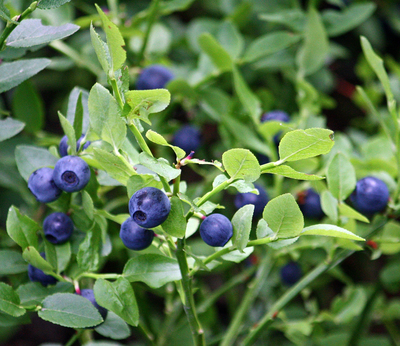Description
The bilberry, also known as Vaccinium myrtillus, is a small, perennial plant native to northern Europe and Asia. It has small, oval leaves and delicate, bell-shaped flowers that range in color from pink to white. The plant produces small, dark blue berries that are often used in jams and jellies. Bilberries are winter hardy and can grow in a variety of conditions, but they prefer moist, well-drained soil and partial shade.
Bilberries are similar to blueberries , but they are generally smaller and have a more tart flavor. They can be distinguished by their dark blue color and the fact that they grow on low-lying bushes, while blueberries grow on taller plants.
To cultivate bilberries successfully, gardeners and farmers should plant them in well-drained soil and provide them with plenty of moisture. They can be grown in full sun or partial shade, but they will produce more fruit if they are grown in partial shade. Mulching around the plants can help retain moisture and control weeds.
Bilberries are edible and can be eaten fresh or cooked. They are high in vitamins and antioxidants, and are often used in traditional medicine to treat a variety of ailments. The berries can be stored in the refrigerator for a few days, or they can be frozen for longer storage.
In addition to their culinary and medicinal uses, bilberries are valuable for wildlife. The plants provide food and shelter for a variety of birds and small mammals, and their berries are an important food source for many species. They are also popular with foragers, who collect the berries to use in a variety of dishes.
Propagation - cuttings
Softwood cuttings
**Late spring - Early summer **
Cut up to 10cm long stems, remove lower leaves and pinch the tip out, dip the stem into rooting hormone, fill a pot with suitable compost, plant cuttings around the edge, water in well, cover and place somewhere warm. Uncover every few days to air the cuttings. Keep the cuttings moist until well rooted. Harden off when well rooted and pot on into individual pots gradually remove the cover to let the leaves to develop.
Semi hardwood cuttings
Late summer - mid autumn
Select branches to cut; the bottom of the cuttings is hard and soft on the top. Take a cutting of about 14 cms, taken from the current years growth and remove lowest leaves. Dip end into rooting hormone. fill a pot with suitable compost, plant cuttings around the edge, water in well, cover and place somewhere warm. Uncover every few days to air the cuttings. Keep the cuttings moist until well rooted. Harden off when well rooted and pot on into individual pots gradually remove the cover to let the leaves to develop..
Links

